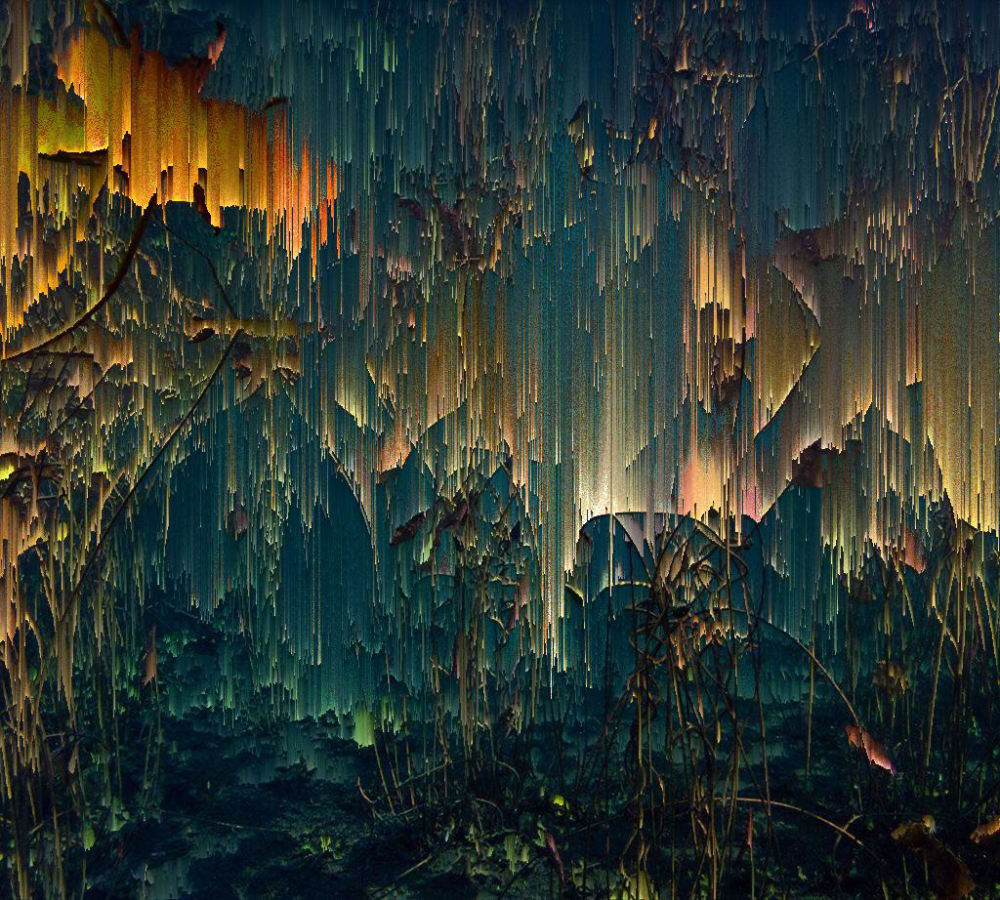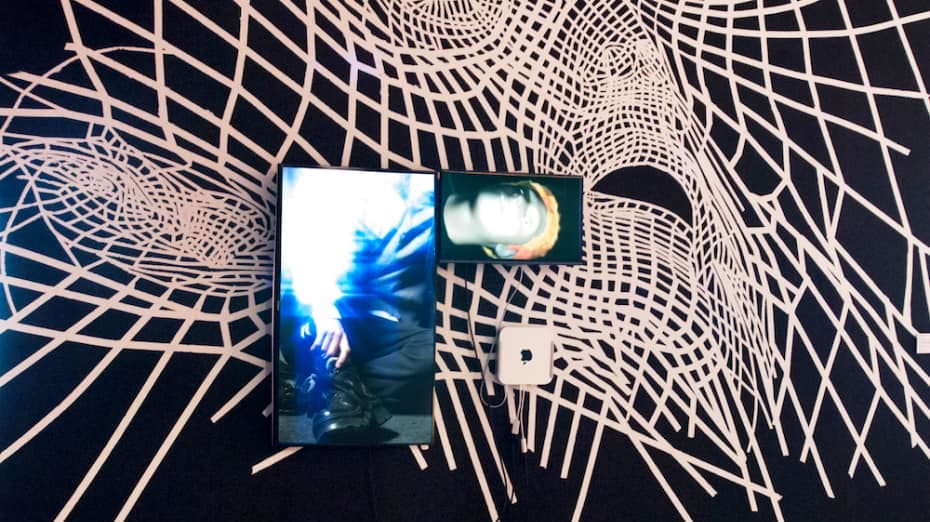The Hollyport Capital Prize is awarded to second-year BA Fine Art students to support their final year of study. Here, we look at the work of Sebastian Elborn – winner of the 2020 Prize – which considers AI, authorship and art.
Elborn’s practice combines technology, code, and AI to produce digital images, videos, and music. The work questions the authorship both in technology and the role of the artist. Can a machine become an artist and can an artist become a machine?
He connects AI with sci-fi soundtracks from which it learns and then composes. The music is then paired with video projections made by creative coding.
“The algorithm is informed by my research and thus selects images that are connected to the conceptual, philosophical enquiry core to my work. This allows for it to suggest new references which subsequently shape my thoughts, acting as a feedback loop and partial generator of its own ideas. Through pixel drifting, using code, I distort the images. This creates a loss of worldly reference and context for the image, resulting in uncanny forms.
"Some of these digital images I physicalise in paintings. I compare pixels to brushstrokes, both of which are fetishised by the art world. The constraints of materiality are examined, where the digital image may behave with disregard for physics, the paint is bound by gravity and my own movement. I am interested in comparing the editing choices of a machine artist to a human artist, who is governed by their own ‘artistic coding’ in the form of artistic intuition and taste, derived from subjection to a large database of artworks.
"The work examines machine authorship and human desire for ownership and uniqueness. It explores at which point an artist may become a machine, through automatic making, and at which point a machine is an artist. Through introspection of my own ‘uncanny’ gender, I examine what it is to lie between boundaries of beings. Animism, Harraway’s The Cyborg Manifesto and Bennett’s theory of ‘becomings’ allow for these boundaries to be disregarded, enabling for a flexible and accepting way of living. We may become hybrid, chimeras with kinship consciousness to other living things and machines, subsequently dissolving the western, cisgender, hierarchical ideology of being, and instead we become posthuman, post-label, democratised beings.”

For his final-year, Elborn plans to “further analyse the transgender experience of unbelonging in comparison to android assimilation and also explore the dynamics of immersive interaction with technology”.
“We were really impressed by Sebastian’s exploration of the relationship between human and machine in terms of creating art. It’s particularly interesting in our age of technology and AI and we think it’s something the audience would find engaging and thought provoking. We also like the fact that he mixes traditional mediums with digital art. We are very excited to see where Sebastian’s work will go with this support for more sophisticated software.”
Katy Lynch, Associate, Hollyport Capital
This year's winner Sebastian Elborn and the runner-up Caitlin Dawes will be graduating in 2021. Explore the work of last year's runner-up Jessica Rique on the Central Saint Martins Graduate Showcase 2020.


